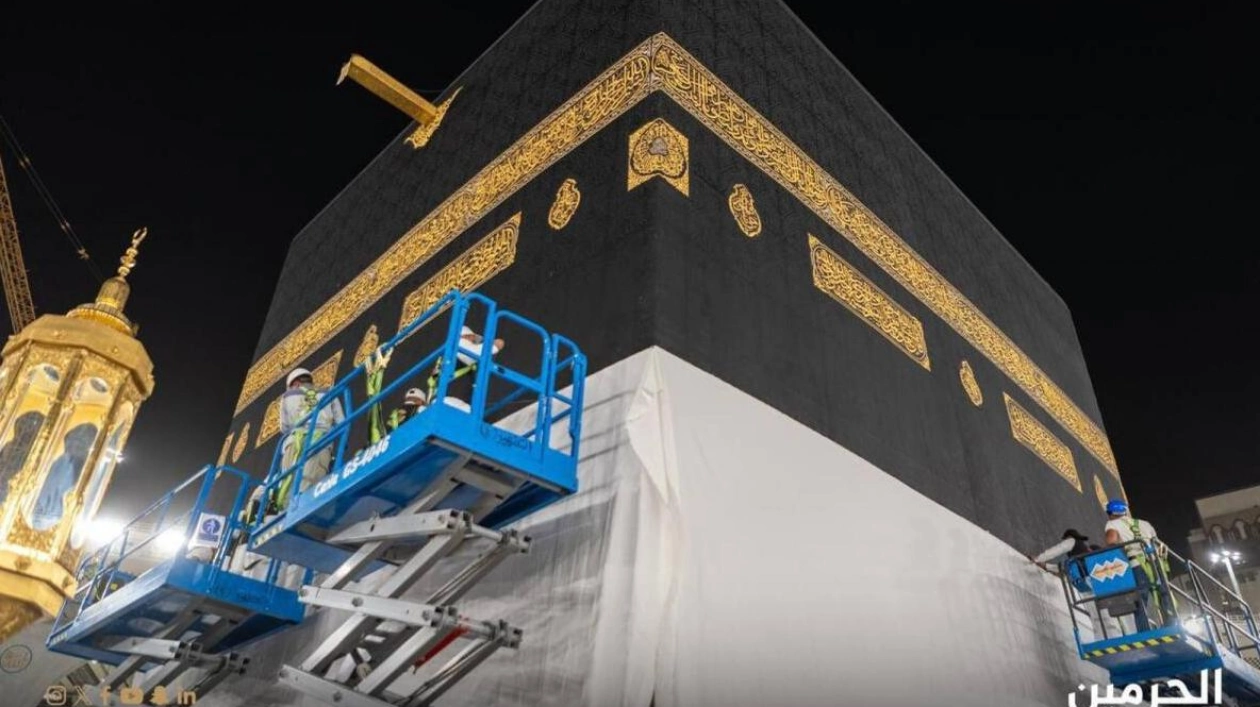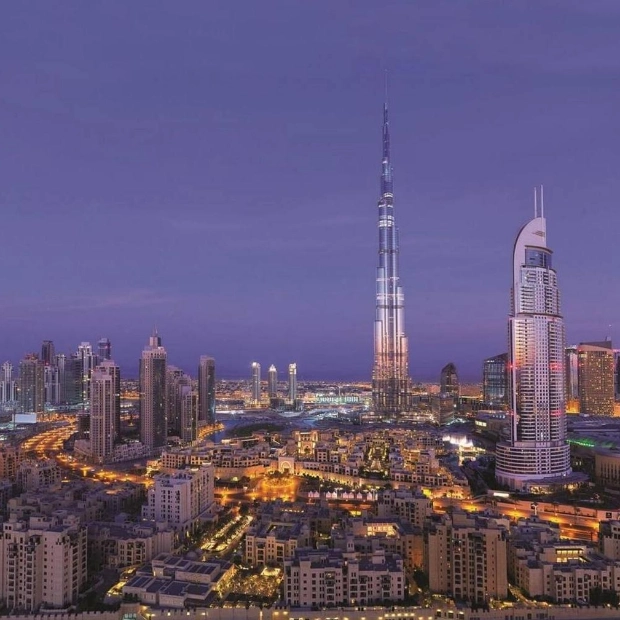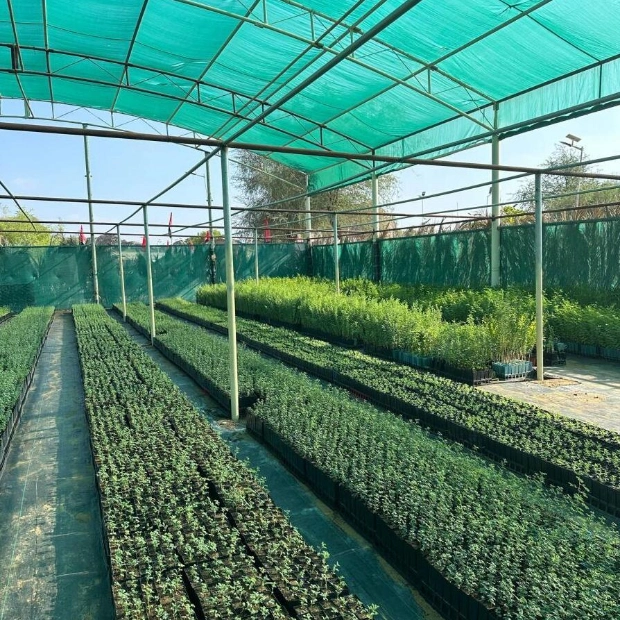In anticipation of the Haj season 2024 (1445AH), the black Kiswa of the Holy Kaaba in Makkah, Saudi Arabia, was raised after the evening prayers. This annual ritual is aimed at safeguarding the Holy Kaaba prior to the Haj pilgrimage. The Kiswa is elevated annually to a height of three meters from the base of the Holy Kaaba and then covered with a 2.5-meter wide and 54-meter long white cotton cloth (ihraam).
The General Authority for the Care of the Affairs of the Two Holy Mosques mobilized specialized national technical teams for this task. The process involves unscrewing the bottom cover from all sides, separating the corners, untying the bottom rope, and removing it from the fixing rings. Subsequently, the cloth is rolled upwards and aligned. The lanterns are dismantled, the white cloth is secured, and then the lanterns are re-installed.
The tradition of changing the Kiswa annually on the ninth day of the Islamic month of Dul Hijjah was shifted to the first day of Muharram in 2022. Additionally, the Ministry of Hajj and Umrah in Saudi Arabia cautioned pilgrims about unscrupulous Haj companies and emphasized the necessity of a valid Haj visa for the pilgrimage. Furthermore, the country has announced penalties for violations of Haj rules and regulations in the year 2024. The Ministry of Interior specified a fine of 10,000 riyals for citizens and visitors caught without a Haj permit in specific locations, including the city of Mecca, central area, sacred sites, Al-Haramain Train Station in Al-Rasifa, security control centers, temporary security control centers, and sorting centers.






